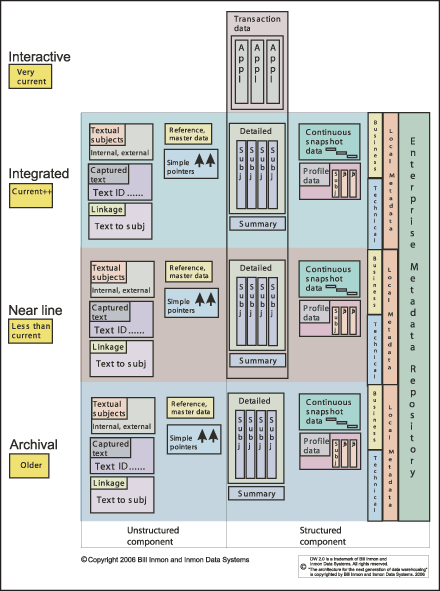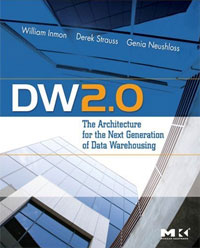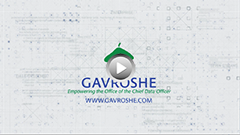DW 2.0
Profile of DW2.0 Consulting Services
DW2.0 ASSESSMENTS, STRATEGIES AND PROGRAM BUILDING
Overview
These Services range from shorter term engagements such as DW/BI Assessments and Strategies (measuring existing programs against DW2.0 best practices; addressing both the demand for and the supply of information) to multi-year engagements such as establishing DW/BI Programs which are compliant with DW2.0 best practices. (For further information regarding these Services, please contact us.)
WHY DW2.0?
Data warehousing began in the mid 1980’s. By 1990 the first book on data warehousing had been written and seminars were just beginning. Soon thereafter data marts, ODS, DSS applications and a whole host of other extensions to the data warehouse began to appear.
And, at the same time, technology began to appear that made data warehousing commercially viable. There was the extension of DBMS to start to be able to handle very large volumes of data. There was a drop in disk storage prices. There was the advent of new forms of storage such as near line storage. There were the Business Intelligence vendors. In short, the world of data warehouse went from a theoretical possibility to a burgeoning reality in a few short years.
But from a thought leadership perspective, something unusual began to happen. Consulting firms were building data warehouses that really weren’t data warehouses. Some vendors began to talk about real time data warehouses and active data warehouses when no such thing existed as part of data warehousing. Some conferences which focused on data warehousing, held many presentations on solutions that were not data warehousing. In those presentations the concept of a data warehouse was changed from what a data warehouse really was to a form of data warehousing that was simply not valid. Yet these non data warehouse structures were called data warehouses. And finally even consultants issued reports that measured the size of data warehouses that included all sorts of data bases that were not remotely data warehouses.
In a word, the thought leadership that once had been very clear surrounding data warehouses turned very murky. People were using any old notion of data warehousing or something resembling data warehousing to sell their products and services whether the notion was proper or not.
Into this sea of confusion comes DW2.0.
DW2.0 – the architecture of the next generation of data warehousing – is a concise and (hopefully!) clear description of what a modern data warehouse should look like. Unlike the term – data warehouse – the term – DW2.0 – the architecture of the next generation of data warehousing – is a trademarked term and cannot be used loosely. In fact the term – DW2.0 – cannot be used commercially at all without the express permission of Bill Inmon. Hopefully this discipline around the term DW2.0 will prevent the confusion and misuse of the term data warehousing. With DW2.0 we know for sure what a data warehouse is and is not. And the vendors and speakers and consultants and writers who want to twist a concept to meet their purposes do not have the legal right to use or speak of DW2.0 without the express written permission of Bill Inmon.
See DW2.0™ schematic below:



